Search Results for 'William Wilde'
13 results found.
Corrib Beo Talk on the Corrib’s Mystery Island – Iniscreamha
The Corrib’s mystery Island is the subject of the next in a series of lunchtime talks organised by Corrib Beo in collaboration with Galway City Museum. This talk at the Museum on Wednesday, February 26 will be delivered by archaeologist, Paul Naessens, and will treat with the eleventh century pre-Norman stone fortress on Iniscreamha Island, close to the east shore of the lake.
Corrib Beo Talk on the Corrib’s Mystery Island – Iniscreamha
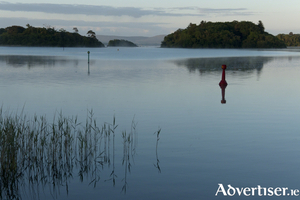
The Corrib’s mystery Island is the subject of the next in a series of lunchtime talks organised by Corrib Beo in collaboration with Galway City Museum. This talk at the Museum on Wednesday, February 26 will be delivered by archaeologist, Paul Naessens, and will treat with the eleventh century pre-Norman stone fortress on Iniscreamha Island, close to the east shore of the lake.
Bankruptcy and scandal plagued the brilliant Wilde family
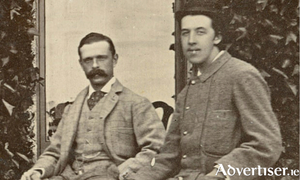
‘Westward Ho! Let us rise with the sun, and be off to the land of the west - to the lakes and streams - the grassy glens and fern-clad gorges - the bluff hills and rugged mountains - now cloud-capped, then revealed in azure, or bronzed by evening’s tints, as the light of day sinks into the bold swell of the Atlantic….’
How Sir William’s ‘moral chloroform’ seduced a young woman
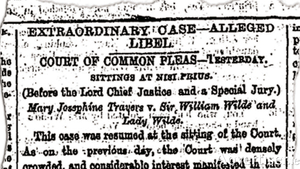
‘ The case is exciting intense interest, and already the sheriff is over-powered with applications for admission to the court, but the police have taken precautions to prevent any undue overcrowding’.
The priest who stole Cong’s famous cross
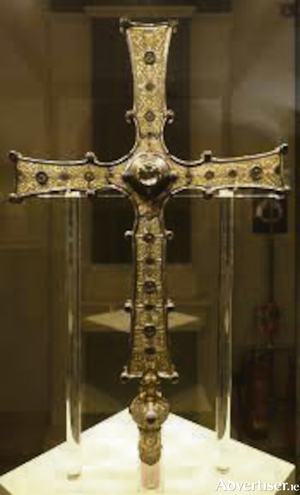
The Cross of Cong, one of Ireland’s great ecclesiastical treasures, was reputedly made at Cloncraff monastary, Co Roscommon. Its unsurpassed craftsmanship was inspired by its relic, a splinter of the wood of the cross on which Christ was crucified.
The Railway Hotel
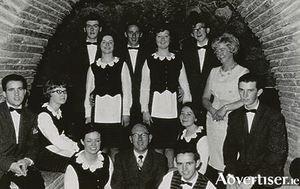
This ancient site on the southern end of what we now know as Eyre Square was occupied by a Knights Templars convent in the 13th century. By the 17th century Robert Martin had a large house on the site, but this was taken from him by the Cromwellians and given to Edward Eyre. The Eyre family held on to the property and on May 12, 1712, Edward Eyre, son of the above, presented the land in front of his house to the corporation as a place of recreation for the people of Galway. In 1827, a man named Atkinson built houses at this end of the Square and by 1845, the site was occupied by a block of tenements owned by Fr Peter Daly.
Two funerals at Menlo Castle cemetery
I have mentioned recently Sir William Wilde’s energetic guide to Lough Corrib - Its shores and Islands (published 1867), and his excitement as he and his family steamed across Ireland from Dublin, to begin their long summer holiday at their holiday home, Moytura Lodge, Cong, at the very north of the lake. From steam train to the Eglinton steamer, which left Galway every day to service the villages on the lakeshore, including Cong, the Wildes steamed passed the ancient home of the Blakes at Menlough (Menlo)* located just before the river enters the great lake.
What should it be... Lough Corrib and Loch Coirib?
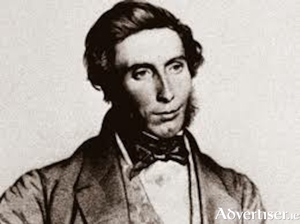
‘Westward Ho! Let us rise with the sun, and be off to the land of the west - to the lakes and streams - the grassy glens and fern-clad gorges - the bluff hills and rugged mountains - now cloud-capped, then revealed in azure, or bronzed by evening’s tints, as the light of day sinks into the bold swell of the Atlantic….’ So begins Sir William Wilde’s famous Lough Corrib - Its Shores and Islands (published 1867), adorned with wonderful woodcuts, as he calls us all to join him as if in a bi-plane, to swoop and dive over its 200km of clear water, fed from rushing streams off the Connemara mountains, giving life to its foreshore and islands where people have lived since the dawn of time, fishing its shallows and its dark deeps; and where monks sought an earthly haven for prayer and solitude.
Sir William Wilde - broken by the death of his children
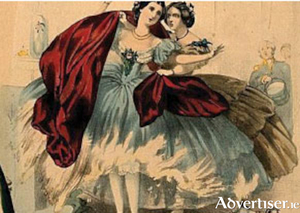
Seven years after the Mary Traver’s case, in which Sir William Wilde, a famous doctor and socialite in the Dublin of the mid 19th century, emerged legally unscathed, but socially damaged, a far worse scandal threatened to ruin his reputation entirely.

